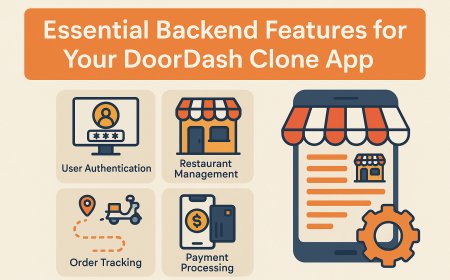How to Flush Redis Keys
How to Flush Redis Keys Redis is one of the most widely adopted in-memory data stores in modern application architectures. Known for its speed, flexibility, and support for advanced data structures like hashes, lists, sets, and sorted sets, Redis is commonly used for caching, session storage, real-time analytics, and message brokering. However, with great power comes great responsibility — and one
How to Flush Redis Keys
Redis is one of the most widely adopted in-memory data stores in modern application architectures. Known for its speed, flexibility, and support for advanced data structures like hashes, lists, sets, and sorted sets, Redis is commonly used for caching, session storage, real-time analytics, and message brokering. However, with great power comes great responsibility — and one of the most critical operations any Redis administrator must understand is how to flush Redis keys.
Flushing Redis keys means removing all data from the database. This can be a necessary action during troubleshooting, environment resets, security audits, or when migrating between systems. While the command to flush keys is simple, the implications are profound. A single misstep can wipe out production data, disrupt live services, or trigger cascading failures. This guide provides a comprehensive, step-by-step breakdown of how to flush Redis keys safely, effectively, and with full awareness of the consequences.
Whether you’re a DevOps engineer, a backend developer, or a system administrator, mastering this operation ensures you maintain control over your Redis environments without compromising stability or data integrity. This tutorial covers everything from basic commands to advanced strategies, best practices, real-world examples, and common pitfalls — giving you the confidence to perform this operation correctly, every time.
Step-by-Step Guide
Understanding Redis Databases and Keyspaces
Before flushing keys, it’s essential to understand how Redis organizes data. Redis supports multiple logical databases — by default, 16, numbered from 0 to 15. Each database is an independent keyspace, meaning keys in database 0 are separate from keys in database 1, and so on. When you connect to Redis, you’re typically connected to database 0 unless otherwise specified.
To check which database you’re currently using, connect to Redis via the CLI and run:
redis-cli
127.0.0.1:6379> SELECT 0
OK
127.0.0.1:6379> DBSIZE
(integer) 42
The DBSIZE command returns the number of keys in the currently selected database. This gives you a baseline before performing any destructive operation.
Flushing All Keys in the Current Database
The most common way to flush keys is using the FLUSHDB command. This removes all keys from the currently selected database without affecting other databases.
To execute this:
- Open your terminal or SSH session.
- Connect to Redis using the CLI:
redis-cli - Ensure you’re in the correct database:
SELECT 0(or your target database number) - Run:
FLUSHDB - Confirm success:
DBSIZEshould return(integer) 0
Example session:
redis-cli
127.0.0.1:6379> SELECT 1
OK
127.0.0.1:6379> DBSIZE
(integer) 89
127.0.0.1:6379> FLUSHDB
OK
127.0.0.1:6379> DBSIZE
(integer) 0
This is ideal for resetting a staging environment or clearing a specific cache namespace without impacting other services.
Flushing All Keys Across All Databases
If you need to wipe everything — all databases, all keys, all data — use the FLUSHALL command. This is a global operation and affects every logical database in the Redis instance.
Warning: This command cannot be undone. There is no recycle bin, no undo, no confirmation prompt. Once executed, data is permanently removed from memory.
To execute:
- Connect to Redis:
redis-cli - Run:
FLUSHALL - Verify:
INFO keyspacewill show zero keys across all databases
Example:
redis-cli
127.0.0.1:6379> INFO keyspace
Keyspace
db0:keys=42,expires=0,avg_ttl=0
db1:keys=89,expires=0,avg_ttl=0
127.0.0.1:6379> FLUSHALL
OK
127.0.0.1:6379> INFO keyspace
Keyspace
db0:keys=0,expires=0,avg_ttl=0
db1:keys=0,expires=0,avg_ttl=0
Use FLUSHALL only when you’re certain no live service depends on Redis data. This is typically done during full system resets, container rebuilds, or when re-provisioning a test environment.
Flushing Keys via Redis API or Programming Languages
While the CLI is useful for manual operations, automated systems often require programmatic control. Most Redis client libraries expose methods to flush keys.
Python (redis-py)
import redis
r = redis.Redis(host='localhost', port=6379, db=0)
r.flushdb()
Flush current database
OR
r.flushall() Flush all databases
Node.js (ioredis)
const Redis = require('ioredis');
const redis = new Redis();
await redis.flushdb(); // Current DB
// OR
await redis.flushall(); // All DBs
Java (Jedis)
Jedis jedis = new Jedis("localhost");
jedis.flushDB(); // Current DB
// OR
jedis.flushAll(); // All DBs
Go (go-redis)
package main
import (
"context"
"github.com/go-redis/redis/v8"
)
ctx := context.Background()
client := redis.NewClient(&redis.Options{
Addr: "localhost:6379",
})
err := client.FlushDB(ctx).Err() // Current DB
// OR
err = client.FlushAll(ctx).Err() // All DBs
When using these APIs in production automation scripts, always wrap flush operations in conditional checks and logging. Never trigger a flush based on unverified user input or automated triggers without explicit approval workflows.
Using Redis CLI with Authentication
If your Redis instance requires authentication (which it should in production), you must provide a password before executing flush commands.
Use the -a flag to pass the password:
redis-cli -a yourpassword FLUSHDB
redis-cli -a yourpassword FLUSHALL
Alternatively, connect first and authenticate:
redis-cli
127.0.0.1:6379> AUTH yourpassword
OK
127.0.0.1:6379> FLUSHALL
OK
Never hardcode passwords in scripts. Use environment variables or secret management tools like HashiCorp Vault, AWS Secrets Manager, or Kubernetes Secrets.
Flushing Keys on Remote or Cloud Redis Instances
Many organizations use managed Redis services like Amazon ElastiCache, Google Memorystore, or Azure Cache for Redis. The process remains the same, but access is typically via a public or private endpoint.
For example, with ElastiCache:
redis-cli -h your-redis-cluster.xxxxxx.ng.0001.use1.cache.amazonaws.com -p 6379 -a yourpassword FLUSHALL
Ensure your security group or VPC peering allows outbound connections from your client machine. Some cloud providers require additional IAM permissions or VPC endpoints for Redis access.
Verifying the Flush Operation
After executing a flush, always verify the result. Don’t assume success. Use these commands to confirm:
- DBSIZE — returns the number of keys in the current database
- INFO keyspace — shows key count and expiration stats for all databases
- KEYS * — lists all keys (use cautiously in production; can block Redis)
- SCAN 0 — safer alternative to KEYS for large datasets
Example verification:
127.0.0.1:6379> FLUSHALL
OK
127.0.0.1:6379> INFO keyspace
Keyspace
db0:keys=0,expires=0,avg_ttl=0
db1:keys=0,expires=0,avg_ttl=0
127.0.0.1:6379> SCAN 0
1) "0"
2) (empty list or set)
If keys still exist, the flush failed. Investigate connection issues, authentication errors, or whether you’re connected to the wrong instance.
Best Practices
Always Backup Before Flushing
Redis provides built-in persistence through RDB snapshots and AOF (Append-Only File) logs. However, these are not substitutes for a proper backup strategy.
Before performing any flush operation, trigger a manual snapshot:
redis-cli SAVE
This forces an immediate RDB dump to disk. For larger datasets, use BGSAVE to avoid blocking the server:
redis-cli BGSAVE
Verify the dump was created:
ls -la /var/lib/redis/dump.rdb
Additionally, ensure your Redis instance is configured with dir and dbfilename in redis.conf, and that the backup directory has sufficient disk space and proper permissions.
Use Environment Isolation
Never flush keys in production unless absolutely necessary. Always test flush operations in staging or development environments first. Use separate Redis instances per environment with clear naming conventions (e.g., redis-prod, redis-staging, redis-dev).
Consider using Redis databases 0–3 for different environments:
- Database 0: Production
- Database 1: Staging
- Database 2: QA
- Database 3: Development
Label your connections explicitly in code and documentation to prevent accidental cross-environment operations.
Implement Approval Workflows
Automated scripts that flush Redis should never run without human oversight. Use infrastructure-as-code tools like Terraform or Ansible with manual approval gates. In CI/CD pipelines, require a manual trigger or approval step before executing a flush command.
For example, in GitHub Actions:
name: Reset Redis Staging
on:
workflow_dispatch:
inputs:
confirm_flush:
description: 'Type "YES" to confirm flush'
required: true
jobs:
flush-redis:
runs-on: ubuntu-latest
if: ${{ github.event.inputs.confirm_flush == 'YES' }}
steps:
- name: Flush Redis
run: redis-cli -h ${{ secrets.REDIS_HOST }} -p ${{ secrets.REDIS_PORT }} -a ${{ secrets.REDIS_PASSWORD }} FLUSHDB
This prevents accidental execution and creates an audit trail.
Monitor Redis During and After Flush
Flushing large datasets can temporarily increase memory fragmentation and CPU usage. Monitor Redis performance metrics before, during, and after the operation:
- Memory usage (
INFO memory) - Connected clients (
INFO clients) - Command stats (
INFO commandstats) - Replication status (if using Redis replication)
Use tools like RedisInsight, Prometheus + Grafana, or Datadog to visualize Redis metrics in real time.
Disable Persistence Temporarily (If Needed)
In some cases, you may want to flush keys without triggering an RDB snapshot or AOF rewrite. For example, if you’re clearing a cache and want to avoid disk I/O overhead.
Temporarily disable persistence:
redis-cli CONFIG SET save ""
redis-cli CONFIG SET appendonly no
Then flush:
FLUSHALL
Re-enable persistence afterward:
redis-cli CONFIG SET save "900 1 300 10 60 10000"
redis-cli CONFIG SET appendonly yes
Use this technique cautiously — disabling persistence leaves your data vulnerable to loss on restart.
Use Redis Modules for Granular Control
Redis modules like RedisJSON, RedisGraph, or RediSearch store data in specialized formats. Flushing with FLUSHALL removes them too, but you may need to restart the module or reinitialize schemas afterward.
Always consult module documentation before flushing. Some modules maintain internal state or indexes that require manual cleanup or regeneration.
Document and Communicate
Every flush operation should be documented. Record:
- Who performed the operation
- When it occurred
- Why it was needed
- What data was affected
- How it was verified
Store this in a shared runbook or incident management system. This ensures accountability and helps future teams understand the state of the system.
Tools and Resources
Redis CLI
The Redis Command-Line Interface is the most direct and reliable tool for flushing keys. It’s lightweight, fast, and available on all platforms. Always ensure you’re using a recent version of Redis CLI to avoid compatibility issues.
RedisInsight
RedisInsight is a free, GUI-based tool from Redis Labs that allows you to visually explore, monitor, and manage Redis instances. You can browse keys, view memory usage, and execute commands — including FLUSHDB and FLUSHALL — through a point-and-click interface.
Benefits:
- Visual key browsing before deletion
- Real-time metrics and alerts
- Multi-instance management
- Command history and audit logs
Download: https://redis.com/redis-enterprise/redis-insight/
Prometheus + Grafana
For production environments, integrate Redis with Prometheus using the redis_exporter. This allows you to monitor key metrics like:
- redis_connected_clients
- redis_used_memory
- redis_total_commands_processed
- redis_keyspace_hits
Set up Grafana dashboards to visualize Redis health before and after flush operations. This helps detect anomalies, such as unexpected spikes in memory or latency.
Ansible and Terraform
Infrastructure automation tools can safely orchestrate Redis flush operations as part of deployment workflows. For example, an Ansible playbook can:
- Check Redis health
- Trigger a backup
- Wait for confirmation
- Execute FLUSHDB
- Verify completion
Example Ansible task:
- name: Flush Redis staging database
command: redis-cli -h {{ redis_host }} -p {{ redis_port }} -a {{ redis_password }} FLUSHDB
args:
chdir: /opt/redis
register: flush_result
when: environment == "staging"
notify: Log Redis Flush
- name: Log Redis flush
lineinfile:
path: /var/log/redis-flush.log
line: "{{ ansible_date_time.iso8601 }} - User {{ ansible_user_id }} flushed Redis DB on {{ redis_host }}"
create: yes
Redis Monitoring Scripts
Create simple bash or Python scripts to automate pre-flush checks:
!/bin/bash
pre-flush-check.sh
REDIS_HOST="localhost"
REDIS_PORT="6379"
REDIS_PASSWORD="yourpassword"
echo "Checking Redis health..."
KEY_COUNT=$(redis-cli -h $REDIS_HOST -p $REDIS_PORT -a $REDIS_PASSWORD DBSIZE 2>/dev/null)
if [ $? -ne 0 ]; then
echo "ERROR: Could not connect to Redis"
exit 1
fi
echo "Current key count: $KEY_COUNT"
if [ "$KEY_COUNT" -eq 0 ]; then
echo "No keys to flush. Exiting."
exit 0
fi
echo "Proceeding with flush..."
redis-cli -h $REDIS_HOST -p $REDIS_PORT -a $REDIS_PASSWORD FLUSHDB
echo "Flush completed."
Redis Documentation and Community
Always refer to the official Redis documentation for the most accurate and up-to-date command behavior:
Community forums like Stack Overflow, Reddit’s r/redis, and the Redis GitHub discussions are excellent resources for troubleshooting edge cases.
Real Examples
Example 1: Resetting a Caching Layer After a Deployment
Scenario: A new version of a web application is deployed, and the old cache keys are incompatible with the updated schema. The team needs to clear the cache to prevent stale data from being served.
Steps:
- Notify all teams of scheduled maintenance window.
- Verify the Redis instance is dedicated to caching (not session storage).
- Run
redis-cli -h cache-prod.example.com DBSIZE— returns 12,450 keys. - Trigger
redis-cli -h cache-prod.example.com BGSAVEto create a backup. - Wait for backup to complete (confirmed via
INFO persistence). - Execute
redis-cli -h cache-prod.example.com FLUSHDB. - Verify with
DBSIZE— returns 0. - Monitor application logs for cache misses — expected behavior.
- Update documentation: “Cache flushed on 2024-06-15 after v2.3 deployment.”
Result: Application resumes normal operation with fresh cache entries. No downtime occurred.
Example 2: Cleaning a Staging Environment Before QA Testing
Scenario: QA engineers need a clean Redis state to test a new feature that relies on session data.
Steps:
- Confirm no active users are connected to staging Redis.
- Use RedisInsight to browse keys — notice keys like “session:*”, “temp:*”, and “auth:*”.
- Take a screenshot of the key structure for reference.
- Execute
FLUSHALLvia RedisInsight GUI with confirmation dialog. - Run a test script that creates 100 new session keys.
- Verify keys are created and accessible via application UI.
- Log the operation in the team’s internal wiki.
Result: QA environment is reset, test suite passes, and the team gains confidence in the new feature.
Example 3: Emergency Data Cleanup After a Security Breach
Scenario: A vulnerability in a third-party library caused unauthorized access to Redis. Suspicious keys were found, including “malware:payload” and “backdoor:cmd”.
Steps:
- Isolate the Redis instance from public networks.
- Connect via internal network or jump host.
- Run
KEYS *to list all keys — identify malicious patterns. - Run
FLUSHALLto remove all data. - Immediately change Redis password and regenerate TLS certificates.
- Enable Redis ACLs and firewall rules to restrict access.
- Restore data from a clean backup taken before the breach.
- Conduct a post-mortem and update security policies.
Result: Malicious data is eradicated, system is hardened, and future risk is mitigated.
Example 4: Automated CI/CD Pipeline Reset
Scenario: A CI/CD pipeline runs integration tests against a Redis-backed microservice. Each test run must start with a clean Redis state.
Implementation:
name: Integration Tests
on: [push]
jobs:
test:
runs-on: ubuntu-latest
steps:
- uses: actions/checkout@v4
- name: Start Redis
uses: supercharge/redis-github-action@1.5.0
- name: Flush Redis
run: redis-cli FLUSHALL
- name: Run Tests
run: |
npm install
npm test
- name: Archive Test Results
uses: actions/upload-artifact@v3
with:
name: test-results
path: test-results/
Result: Each test run is isolated and repeatable. No test contamination occurs between runs.
FAQs
What is the difference between FLUSHDB and FLUSHALL?
FLUSHDB removes all keys from the currently selected Redis database. FLUSHALL removes all keys from all databases in the Redis instance. Use FLUSHDB for targeted resets and FLUSHALL for complete data wipes.
Can I undo a FLUSHALL command?
No. Redis does not have an undo feature. Once keys are flushed, they are permanently removed from memory. Recovery is only possible if you have a prior backup (RDB or AOF file).
Does FLUSHDB affect Redis persistence?
No. FLUSHDB only clears the in-memory dataset. Persistence files (RDB/AOF) remain unchanged. However, if persistence is enabled, the next snapshot or rewrite will reflect the empty state.
Can I flush only specific keys?
Yes, but not with FLUSHDB or FLUSHALL. To remove specific keys, use the DEL command with key patterns. For example: DEL user:123 session:abc. For bulk deletion by pattern, use a script with SCAN and DEL, or use the UNLINK command for non-blocking deletion.
Will flushing Redis affect connected clients?
Yes. All clients lose access to the data they were using. Applications relying on Redis for session storage, caching, or queuing will experience errors or timeouts until data is repopulated. Always plan for this impact.
Is it safe to flush Redis in production?
Only if you have a validated backup, a clear business justification, and coordinated downtime. In most cases, avoid flushing production Redis. Use separate instances for production and non-production environments.
How long does FLUSHALL take?
It’s typically instantaneous — even with millions of keys — because Redis removes keys from memory in O(n) time without writing to disk. However, if persistence is enabled, a background rewrite may trigger afterward, which can cause temporary performance impact.
Can I flush Redis remotely without CLI access?
Yes, if you have API access via HTTP (e.g., through RedisInsight or a custom API wrapper). However, direct CLI or client library access is preferred for reliability and security.
Why does FLUSHALL sometimes appear to hang?
It rarely does. If it appears to hang, check for network latency, authentication failures, or connection timeouts. Use redis-cli --latency to test connection health.
How do I prevent accidental flushes?
Use strong authentication, restrict CLI access, implement approval workflows, use environment separation, and enable Redis ACLs (Access Control Lists) to limit who can execute dangerous commands.
Conclusion
Flushing Redis keys is a powerful and potentially dangerous operation. While the commands — FLUSHDB and FLUSHALL — are simple to execute, their consequences can be severe if performed without caution. This guide has provided you with a comprehensive, step-by-step roadmap to safely and effectively flush Redis keys across multiple environments, use cases, and platforms.
From understanding the difference between databases to implementing automated workflows and monitoring tools, you now have the knowledge to handle this operation with confidence. Remember: always verify your target, backup your data, document your actions, and test in non-production environments first.
Redis is designed for speed and simplicity, but that simplicity demands responsibility. By following the best practices outlined here, you ensure that your Redis instances remain reliable, secure, and performant — even after the most drastic data-clearing operations.
As Redis continues to power mission-critical applications at scale, mastering foundational operations like flushing keys isn’t just a technical skill — it’s a professional obligation. Use this guide as your reference, revisit it before every operation, and never underestimate the weight of a single command.





































